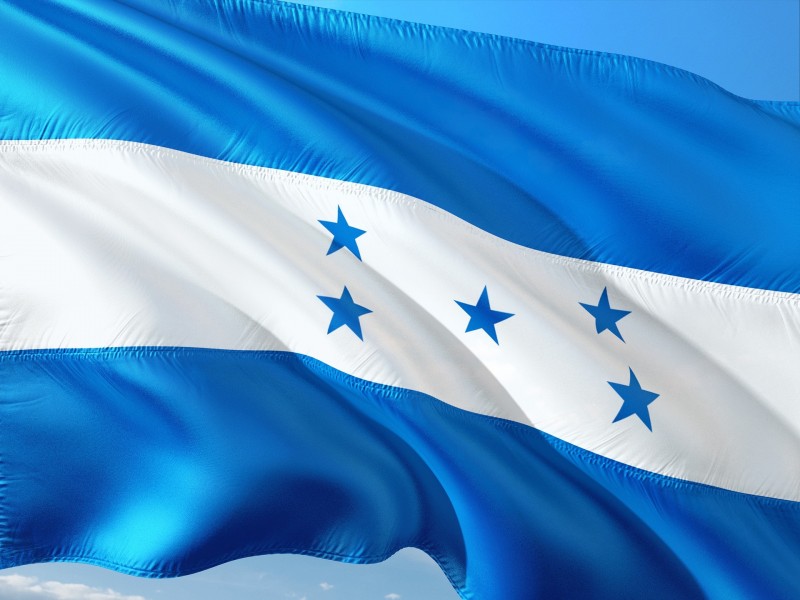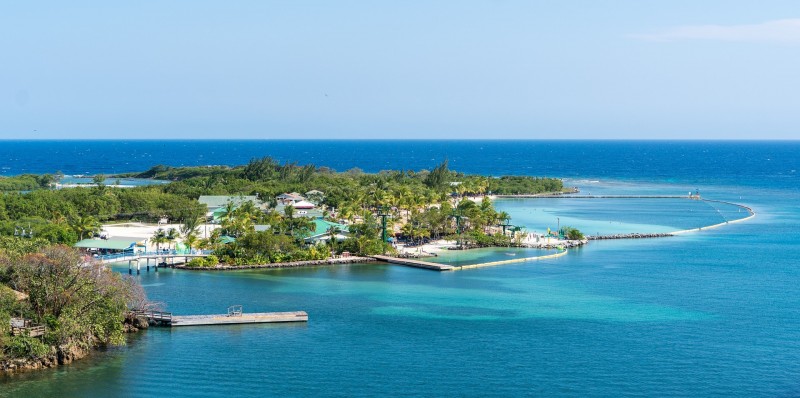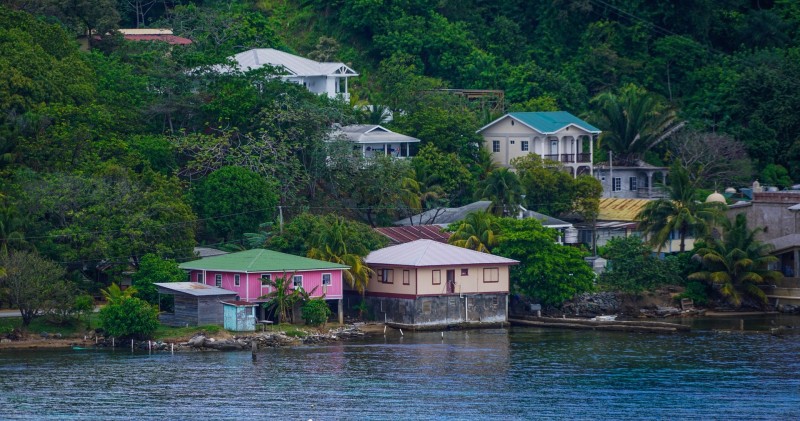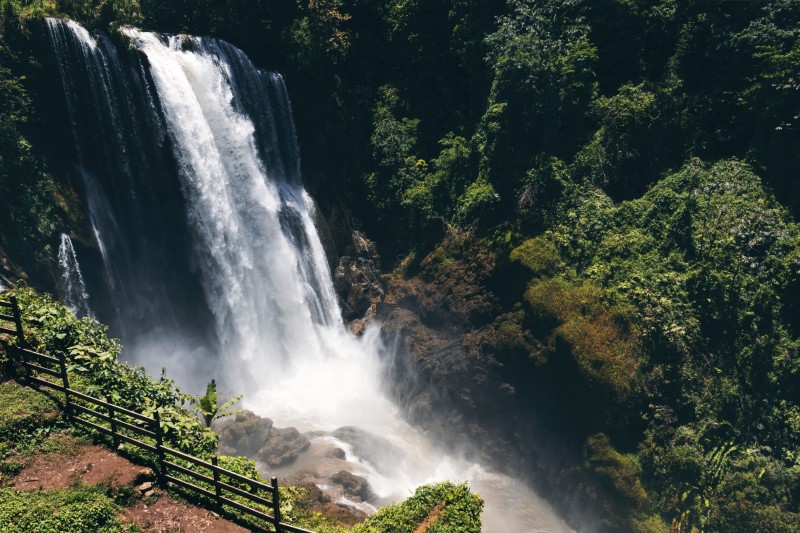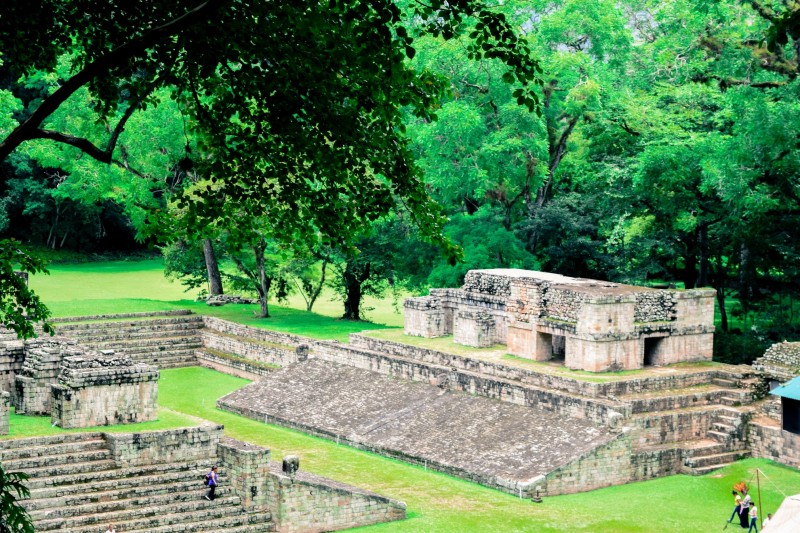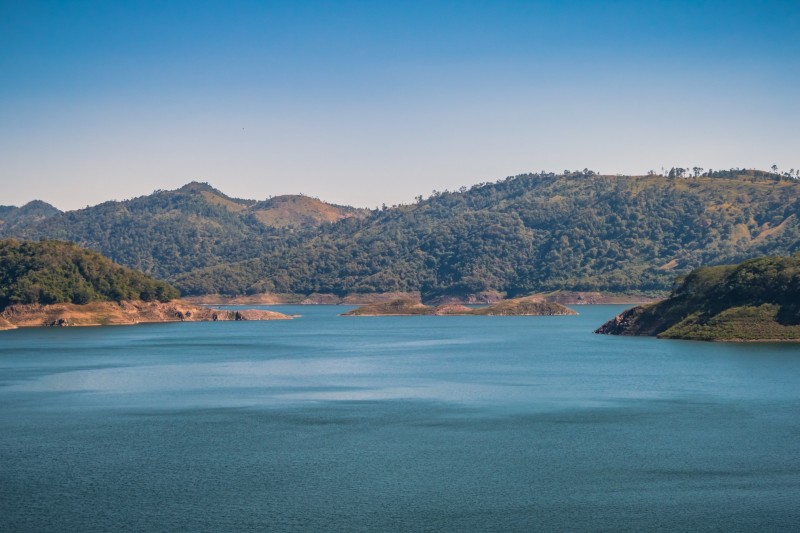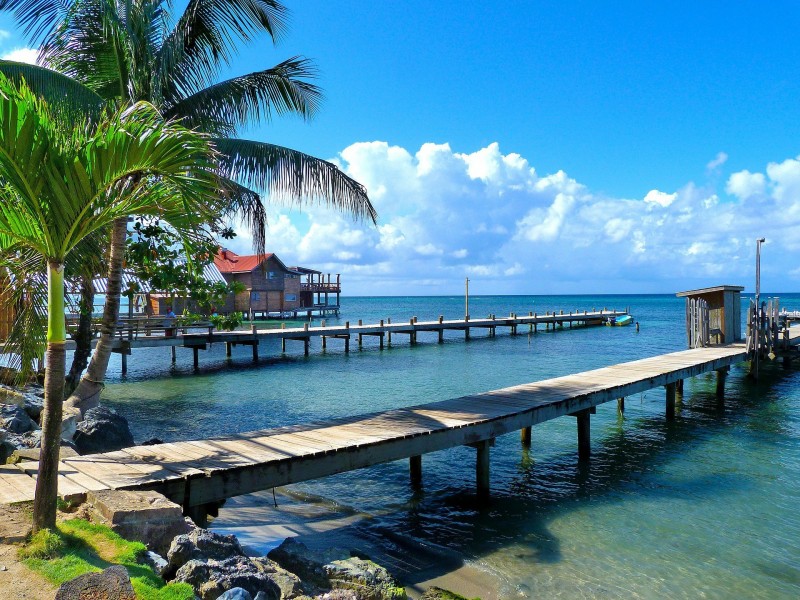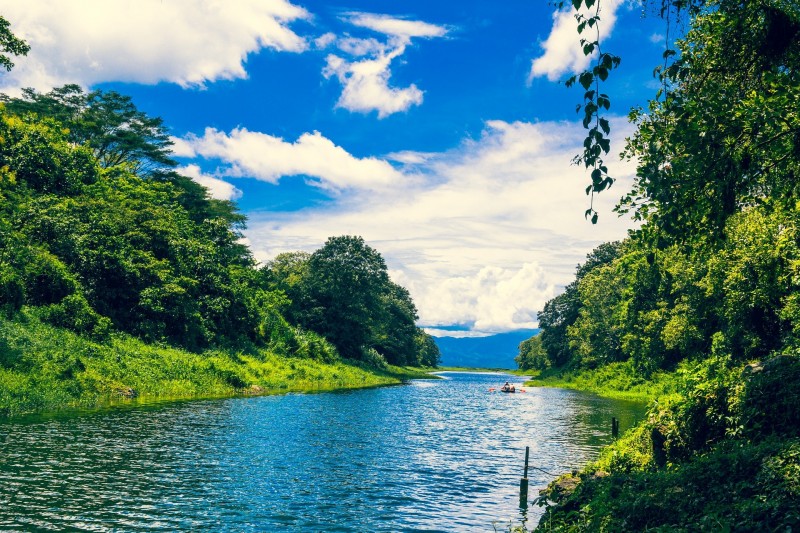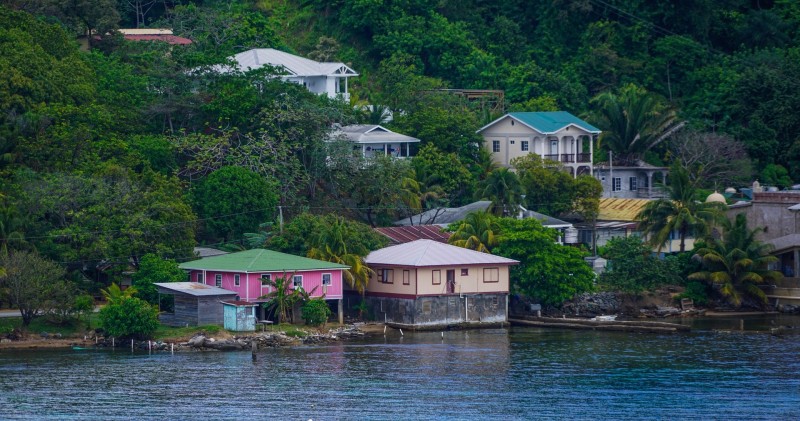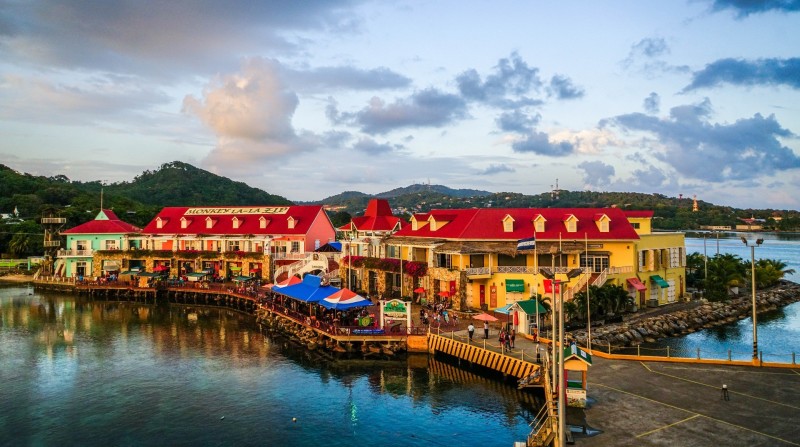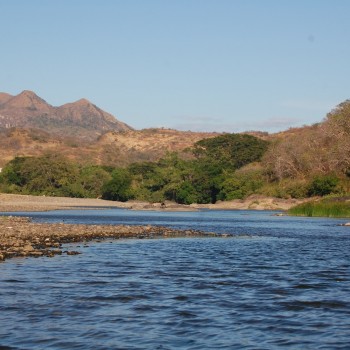Honduras
Honduras
Capital city description
Tegucigalpa, founded in 1578 on the slopes of Mount Picacho as a gold- and silver-mining center, alternated with Comayagua, 35 miles (56 km) to the northwest, as capital from 1824 to 1880, when Tegucigalpa was made the permanent capital of the republic. In 1938 it was combined with the city of Comayagüela, located just across the Choluteca River to the south. The city's principal buildings include the presidential and legislative palaces, the National University of Honduras, and an 18th-century cathedral. Industrial production, formerly small and mainly for local consumption, increased in the 1970s with the improvement of road connections. One of the few capitals in the world without a railroad, Tegucigalpa depends mainly on the international airport at Toncontín, which, for the most part, is inadequate for the task. Freight can be trucked in over the all-weather Inter-Oceanic Highway from Puerto Cortés on the Caribbean coast or San Lorenzo on the Pacific coast. From El Salvador and Nicaragua, the Inter-American Highway intersects the Inter-Oceanic Highway, which leads to the city. Roads to other departments also fan out from Tegucigalpa.
Increasing maquiladoras have been established in the metropolitan area since the late 20th century. The city's factories produce textiles, clothing, sugar, cigarettes, lumber, plywood, paper, ceramics, cement, glass, metalware, plastics, chemicals, tires, electrical appliances, and farm machinery. Silver, lead, and zinc is mined in the city's vicinity. Tegucigalpa also has an industrial park.
Climate
The climate in Honduras is hot and tropical in the coastal lowlands, with annual temperatures averaging 26°– 29°C; it becomes more temperate in the highlands, where yearly temperatures average 16°– 24°C.
Languages spoken
Spanish is the official language of Honduras.
Fun/Fascinating Facts
- Bats make up over half of the country’s mammal species. Most of the bats live in protected habitats. It’s home to cute species like the fluffy Honduran White Bats, which measure between 3.7 – and 4.7 cm and have tiny orange ears, faces, noses, and wings.
- In 2011, Hondourus enforced a new law banning smoking in public and private spaces came into action. It isn’t illegal to smoke in your own home, but if a visitor or a family member complains, it could result in a visit from the police and a US$311 fine.
- Honduras is a bird-watchers paradise, home to over 700 bird species. With its distinctive red, blue, and yellow plumes, the Scarlet Macaw is Honduras’ national bird. It lives in forests across northern Central America, but most of them inhabit the pine forests of Gracias a Dios.
- The waters on the Caribbean coast right next to Honduras are home to the second-largest coral reef in the world. Only the one in Australia is larger.
- Honduras is home to several venomous snakes, including the Green Palm Pit Viper, the Coral Snake, and the Middle American Rattlesnake.
Unique Customs/Traditions
- Semana Santa is a week-long celebration. It is never on the exact dates, but it is between March and April, depending on when Easter falls that year. Santa Rosa de Copan is one of the best places to visit in the Honduras mountains during this time of the year. The town is also very close to the Mayan Copan ruins.
- Punta Gorda Festival takes place annually on April 12. It is a unique Honduran festival. On this day, people from all over the country get together on the island of Roatan to celebrate a special day for the Garifuna people that live on it.
- Feria Juniana festival is held during the last week of June in San Pedro Sula. The festival is full of live musical performances, food stalls with traditional dishes, and people are drinking. You will also be able to enjoy colorful parades.
- San Isidro Fair festival is held at the end of every May in the town of La Ceiba. It is the largest festival in the country. During this festival, you will be able to participate in many cultural activities where people wear colorful clothes and paint their faces to celebrate this special and unique festival. It is similar to the Mardi Gras celebration in New Orleans.
Popular universities
| Name | Description | |
|---|---|---|
| The National Autonomous University of Honduras | The National Autonomous University of Honduras Established in 1847, the National Autonomous University of Honduras is a non-profit public higher education institution located in the urban setting of the large city of Tegucigalpa Francisco Morazan. Officially recognized by the Ministry of Education of Honduras, UNAH is a co-educational Honduran higher education institution. UNAH offers courses and programs leading to officially recognized higher education degrees, such as bachelor's degrees in several areas of study. UNAH also provides academic and non-academic facilities and services to students, including a library, sports facilities, study abroad and exchange programs, online courses and distance learning opportunities, and administrative services. International applicants are eligible to apply for enrollment. | |
| Francisco Morazan National Pedagogical University | Francisco Morazan National Pedagogical University was established in the year 1956. It is a state university situated in Tegucigalpa in Honduras. There is home to more than 27000 students. Francisco Morazan National Pedagogical University comprises two academic faculties and three institutes that offer multidisciplinary education. It offers bachelor’s, master’s, and doctoral degree programs. Other courses include research, study abroad, virtual learning, and vocational training. Faculties recruited in the university are experienced and are provided with timely basic education training helping them in improve their skills. Students can also apply for language courses, short courses, diplomas, continuous education, and distance education. Francisco Morazan National Pedagogical University has an urban and attractive infrastructure with student facilities. Student services include the cafeteria, athletic field, sports courts, pool, gym, recreational area, language center, observatory, student support center, wellness center, halls, theater, and auditorium. Students can become part of student clubs and organizations. University media has editorials and press. The University library is like a bookstore where one can purchase books and publications. It is equipped with books, magazines, research guides, archives, and teaching material. Other services include a video library, databases, e-resources, computer systems, internet access, and training rooms. | |
| Catholic University of Honduras | Lady Queen of Peace Catholic University of Honduras (UNICAH) is a private nonprofit higher education institution in Honduras. UNICAH was established in 1992. Our Lady Queen of the Peace Catholic University of Honduras is one of the top educational institutions in Honduras that never leaves the country’s top 5 places to study. The students must pass examinations to enroll in the university. It is not that difficult to get accepted to the university as the competition is fairly mild - 90 seats per 100 applicants. The university divides its academic year into trimesters. 1,000 USD/год. Master’s studies at UNICAH will cost about 1,000 USD per year. Our Lady Queen of the Peace Catholic University of Honduras is average in student capacity, teaching a maximum of 15 thousand students. Foreign citizens can also apply to the university. The academic makeup of UNICAH includes around 799 teachers. The university provides its students with the opportunity to participate in international exchange programs. The students have access to the university’s library. | |
| Panamerican Agricultural University | Pan-American Zamorano School of Agriculture (EAP) is a private nonprofit higher education institution in Honduras. EAP began its academic activity in1942. In Honduras Pan-American Zamorano School of Agriculture is among the top 10 universities. The student must provide information on previous academic performance and pass examinations to enroll. It is very likely to get admitted to EAP as only three applicants per seat. The cost of tuition for the bachelor’s programs is around 15,000 USD per year. Those who wish to get their master’s degree here should be ready to spend at least 15,000 USD per year. One thousand students attend Pan-American Zamorano School of Agriculture, which puts it in the group of small universities in the classification. Foreign citizens can submit their applications along with the local students. The academic makeup of EAP includes around 599 teachers. Student exchange programs are one of the draws of the university. The university has a dedicated library. | |
| Central American Technological University | Central American Technological University (UNITEC) is a private nonprofit higher education institution in Honduras. UNITEC was founded in 1986, the main campus of this university in Tegucigalpa. Central American Technological University is the second best educational institution in Honduras. The main criterion of admission is the academic performance of the applicant. The university divides its academic year into trimesters. The tuition fees are pretty steep. Central American Technological University is average in student capacity, teaching a maximum of 15 thousand students. The academic makeup of UNITEC includes around 899 teachers. The university provides its students with the opportunity to participate in international exchange programs. Foreign citizens can also apply to the university. | |
Festivals & Events
.jpeg)
Feria de San Isidro (La Ceiba Carnival)
Date: May 15
La Ceiba Carnival, or the San Isidro Fair, is the most significant event in Honduras, similar to the Rio Carnival or Mardi Gras in New Orleans. La Ceiba festival occurs at the end of May to pay tribute to the Catholic patron saint, Isidore the Laborer, or San Isidro in Spanish. The entire town transforms into festival grounds with live Latin American music, dancing, and singing. Locals wear colorful national costumes and sell farm products, handmade clothing and footwear, souvenirs, and typical Honduran things. The culmination of the fair is the float parade that showcases the country's national culture. It is called the "Grand Carnival de La Amistad" and runs along the main street. The San Isidro Fair offers vast street parties, lots of fun, and a chance to experience the Latin American culture fully.
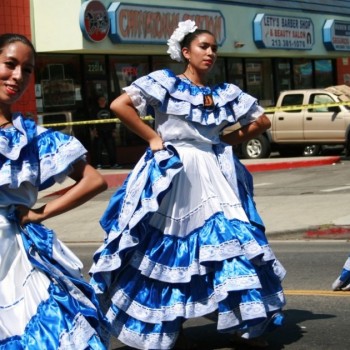
Day of the Americas
Date: April 14th
On April 14th, Day of the Americas, or Pan American Day, Held annually commemorates the establishment of the International Union of American Republics in 1890, promoting cooperation and peace between North and South America. On this Honduras festival and holiday, every American country displays pride in this important event in history. However, Honduras has its way of adding a dash of unique flavor to the celebrations. Proud flag-waving, street parades, musical performances, and art displays bring the country’s streets alive. You may even catch re-enactments of actual events from American history performed by the university or school students.
.jpg)
Punta Gorda Festival
Date: Punta Gorda Festival
The oldest permanent settlement in Roatan, Punta Gorda, was founded shortly after April 12, 1797, when some 3,000 Garífuna deportees from the Caribbean island of San Vicente were stranded on Roatan by the British. At the Garifuna annual festival, the Garifuna people celebrate their first arrival in Punta Gorda, Roatan. The event is the best display of the Garifuna culture. The festival includes animated theatrical performances that celebrate the first arrival of the first Garifuna group from Yurime, a small region east of the Caribbean island of St. Vincent. The Garifuna come to live with their dances, drums, and colorful attires. Roatan locals dress the part and chant traditional songs in their native Garifuna language.
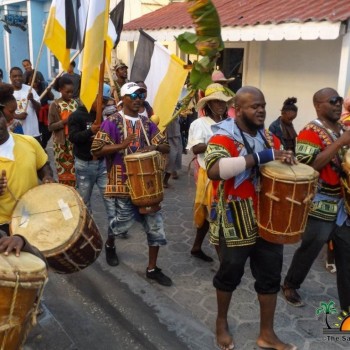
National Garifuna Festival
Date: third weekend of July
National Garifuna Festival is celebrated on the third weekend of July every year; National Garifuna Festival is held in the town of Bajamar, near Puerto Cortés in northwestern Honduras. Understandably, this Honduras holiday and celebration is contained in honor of the Garifuna people and communities. During this time, Bajamar comes alive with the locals sipping on Gifty and enjoying a merry time. There’s singing, dancing, and enjoyment, turning the entire town into a giant party!

Festival de Lluvia de Peces (Rain of Fish Festival)
Date: second week of June
This “fish rain” occurs at the beginning of the rainy period, somewhere from May – to July. Downpours of heavy rain and strong winds continue for at least 45 minutes and may last even for several hours. There comes a day when an ominous, dark cloud with furious lightning and thunder comes in the afternoon.
As the storm leaves, the people of Yoro pick up baskets and run out to the swampy meadows of La Pantanal at the foot of extinct volcano El Mal Nombre. Hundreds and even thousands of jumping, live fish are found in the wet fields as if fallen from the sky during the storm. People collect the fish to bring it home and eat – fish is told to have a specific taste, different from the bite of common fish.
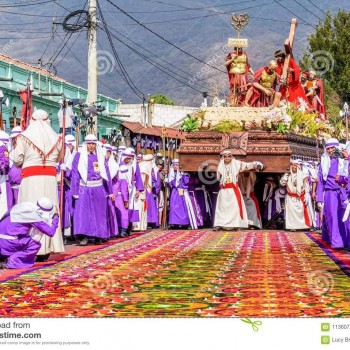
Semana Santa
Date: in March or April
The most significant influx of tourists occurs during Holy Week (La Semana Santa) in Honduras. Semana Santa means several days of devout celebration, including extravagant parades with costumed participants marching through the streets carrying fantastic floats with Jesus on the cross. On Good Friday, people cook soups made from dried salted fish and Sopa de Capirotadas with cheese dumplings. Sweet ring-shaped pastry Rosquillas En Miel and Nacatamales are also served today. After a meal, everybody usually goes to see a procession dedicated to the crucifixion.

Fiesta de Maiz (Corn Festival)
Date: last week of August
This festival celebrates in the city of Danlí, located some 90km (56 miles) southeast of the capital city Tegucigalpa, and Fiesta de Maiz celebrates to honor one of the essential foods, corn in the country today and a central food item of native Mayan tradition. The celebrations usually kick off during the last week of August and go on until the beginning of September. During this time, locals put up fervent displays highlighting the centrality of corn. Corn-based food preparations (corn tortillas, corn tacos, corn tamales, etc.) take over local fairs, and they’re worth trying. Don’t forget to try the unique yet hugely delicious corn doughnuts sold during the festival. Live music concerts, skits, and other fun activities also occur, so try and attend Fiesta de Maiz.
Attractions / Top Sights
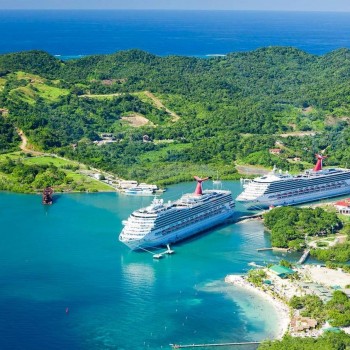
Roatán, Bay Islands
When to visit: https://www.planetware.com/tourist-attractions/honduras-hon.htm
The island of Roatán is the largest of the archipelago of the Bay Islands and is part of the Mesoamerican Reef Barrier. The island, 45 kilometers long, is geographically formed by hills covered with lush vegetation and is located 30 miles from the Honduran coast. The island also provides bohemian areas to hotel areas with the “all-inclusive” system and restaurants, bars, and nightclubs for those who seek entertainment and nightlife. In Roatán, there is something for everyone.
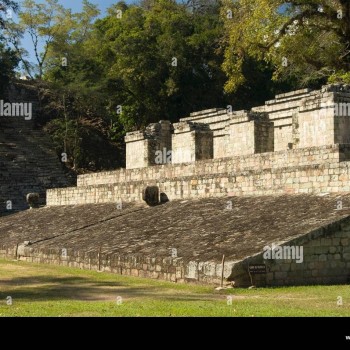
Copán Ruins Archeological Site
The site comprises some 250 acres (100 hectares), including residential areas. Its central district covers 54 acres (22 hectares) and consists of stone temples, two large pyramids, several stairways and plazas, and a court for playing the ball game tlachtli. Most of these structures center on a raised platform (now called the Acropolis) that was the architectural center of the ancient city. Copán is particularly noted for the friezes on some of its other buildings and the portrait sculptures on its many stelae. The Hieroglyphic Stairway, which leads to one of the temples, is beautifully carved with some 1,260 hieroglyphic symbols on the risers of its 63 remaining steps. There is evidence that astronomers in Copán calculated the most accurate solar calendar produced by the Maya up to that time.
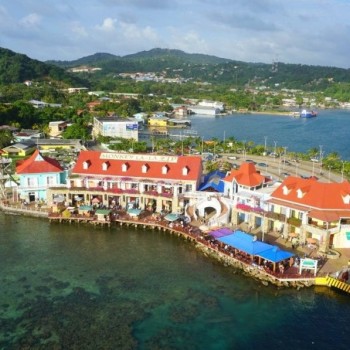
Utila, Bay Islands
Utila, Bay Islands is located approximately 18 miles from the coast of mainland Honduras; Utila is the smaller of the three central Bay Islands. A lush canopy of pine, mango, almond, and palm trees covers most of the island, providing a haven for tropical birds, rare lizards, and iguanas. Utila offers a delightful maze of caves and caverns, where jade beads and many other indigenous artifacts have been found. A large hill on the extreme northeast coast dominates the landscape and is named Pumpkin Hill for its round, sloping shape. It is the most prominent and visible hill on the island, a favorite lookout point for natives and pirates.
The town of Utila in East Harbor is the center of activity. Visitors stroll the main road leading from the old airstrip past a large mangrove-lined lagoon into town. Softly faded pastels of shuttered wooden buildings, often precariously perched above stilts and over 100 years old, sweep the unsuspecting into another era.
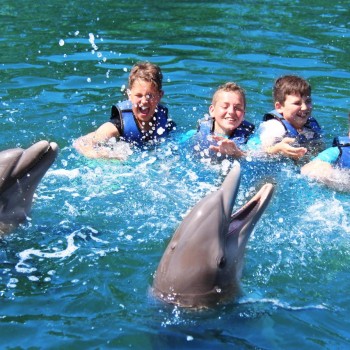
Dolphin Encounter, Roatán Institute for Marine Sciences
Roatan is home to the Roatan Dolphin Encounter, a sought-after shore excursion island visitors have come to enjoy and talk about for years to come. Located at the Roatan Institute of Marine Sciences (RIMS) in Sandy Bay, the Roatan Dolphin Encounter is centrally situated for cruise ship passengers and resort guests. The picturesque views and clear Caribbean turquoise sea make this experience one of a kind.
The Roatan Dolphin Encounter consists of a 30-minute session with the dolphins and a trainer in waist-deep water. You will have the opportunity to learn about the dolphins and interact with them. They will perform jumps, tail walks, hugs & kisses, and rubdowns. Photographs will be available for purchase, and you may take your photos towards the end of your dolphin encounter.
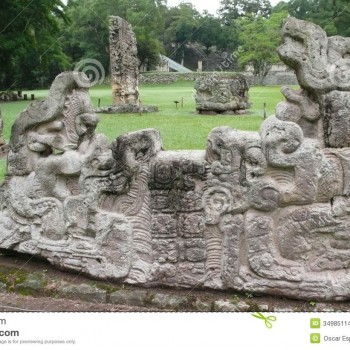
Museum of Mayan Sculpture, Copán
The Copan Sculpture Museum in western Honduras features the extraordinary stone carvings of the ancient Maya city known as Copan. The city’s sculptors produced some of the finest and most animated buildings and temples in the Maya area and stunning monolithic statues and altars. The ruins of Copan were named a UNESCO World Heritage site in 1980, and more than 150,000 national and international tourists visit the ancient city each year. This museum Opened in 1996, and the Copan Sculpture Museum was initiated as an international collaboration to preserve Copan’s original stone monuments. Its exhibits represent the best-known examples of building façades and sculptural achievements from the ancient kingdom of Copan. The creation of this on-site museum involved people from all walks of life: archaeologists, artists, architects, and local craftspeople. Today it fosters cultural understanding and promotes Hondurans’ identity with the past.
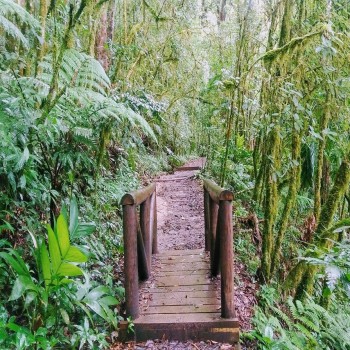
La Tigra National Park
La Tigra National Park is close to the capital of Honduras. Its boundaries are a mere 14 kilometers from Tegucigalpa, which locates in the country's southern region. La Tigra was initially established as a reserve in 1952 and then became Honduras' very first national park in 1980. The park's boundary covers an area of approximately 23,571 hectares, with parts of La Tigra reaching altitudes of 2270 meters. The park's large size means that it is home to many cloud forest areas, an ideal environment for oak trees to thrive. Cloud forests are forested areas covering mountaintops and contain an array of plant life, including lianas, vines, bromeliads, mosses, and ferns. La Tigra National Park is the best opportunity for enthusiastic bird watchers to see most of Central America's highland endemics in the cloud forests. The park is also home to the arid broadleaf forest and highland forest. Birders could expect to see quetzals and perhaps be fortunate enough to spot blue and white mockingbirds, rufous-browed wrens, wine throated hummingbirds, and green breasted mountain gems. The park is home to many mammals, including ocelots, pumas, peccaries, white-tailed deer, armadillos, opossums, and agoutis.
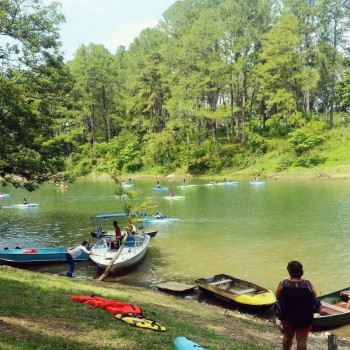
Lake Yojoa (Lago de Yojoa)
Lake Yojoa is the largest lake in Honduras, with a surface area of 79 square kilometers (30.50 mi²) and an average depth of 15 meters (50 ft). At an altitude of 700 meters (2,300 ft), it lies in a depression formed by volcanoes. The Lake Yojoa volcanic field consists of Pleistocene to Holocene scoria cones, craters, and lava flows. The lake sits on the highway connecting the two largest Honduran cities, Tegucigalpa and San Pedro Sula. The west side of the lake is bordered by steep mountains and Santa Bárbara National Park, while the east side is adjacent to Cerro Azul Meambar National Park. For many people traveling between the cities, the lake serves as a rest area to appreciate the view and enjoy the fresh fried fish and other foods offered by the restaurants located on its banks.
Lake Yojoa is a popular fishing destination, and the surrounding area has rich biodiversity—almost 400 birds and 800 plant species have been identified in the region. However, it also is threatened by deforestation, cattle ranching, and development. The settlers of the communities around the lake dedicate themselves to cultivating fruits, vegetables, and basic grains. Nevertheless, many of these inhabitants earn their living from the sale of fish originating from the lake. People dedicate surrounding areas to the growing of coffee plants. Coffee grown near Lake Yojoa in Santa Barbara is particularly well-known.
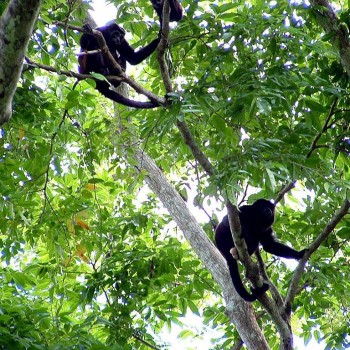
Parque Nacional Jeanette Kawas
One of Honduras' most charming destinations is the Jeannette Kawas National Park, PNJK. This treasure of mother nature is located in the Bahía de Tela, department of Atlántida, although people place it between; the municipality of Tela and the municipality of Puerto Cortés in the department of Cortés. The famous park adorns flora and fauna, scenarios that leave national and foreign tourists speechless. Visitors who visit the park will notice that in this place, there are two worlds to discover: the Punta Sal Peninsula and Los Micos Lagoon. As they enter this splendid site, visitors will appreciate the mangrove forests, rocky white sand beaches, coral reefs, and coastal lagoons, habitat of a great diversity of trees and shrubs, as well as mammals, birds, reptiles, amphibians and insects, many of them in danger of extinction.















